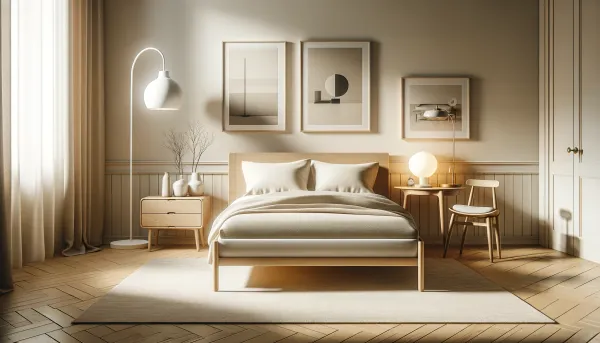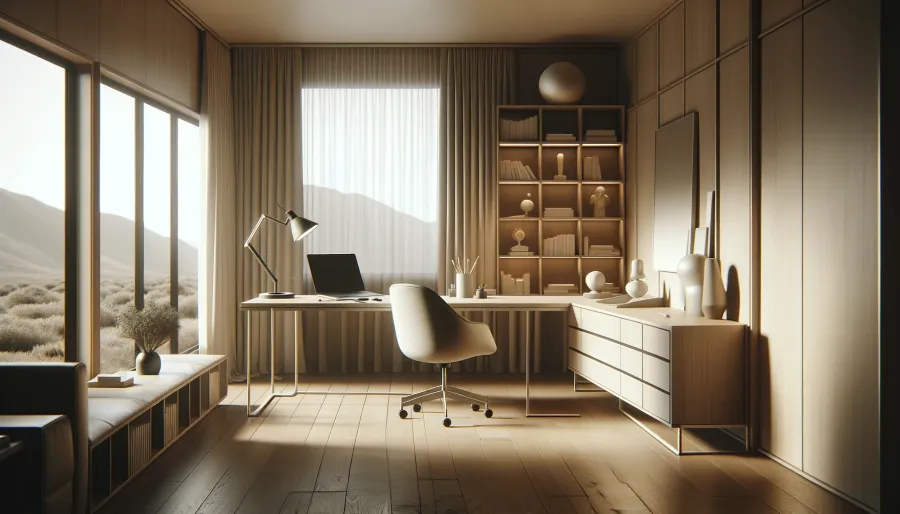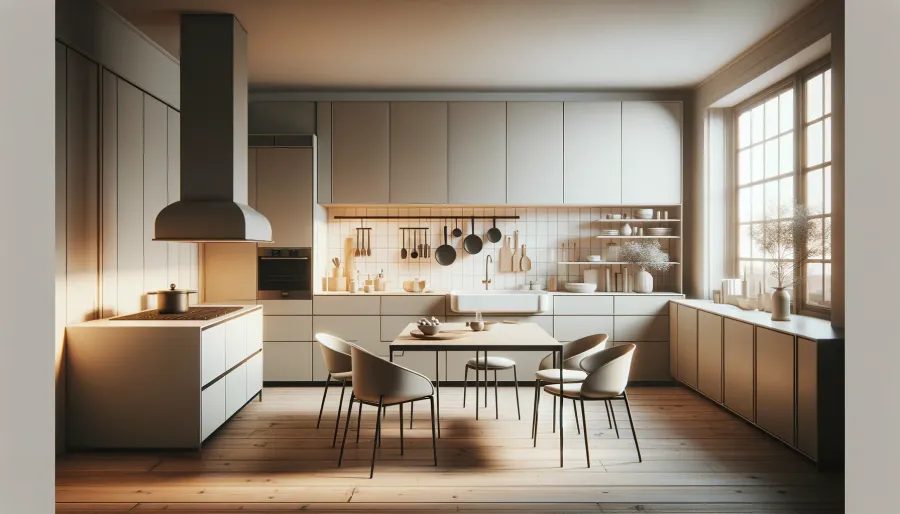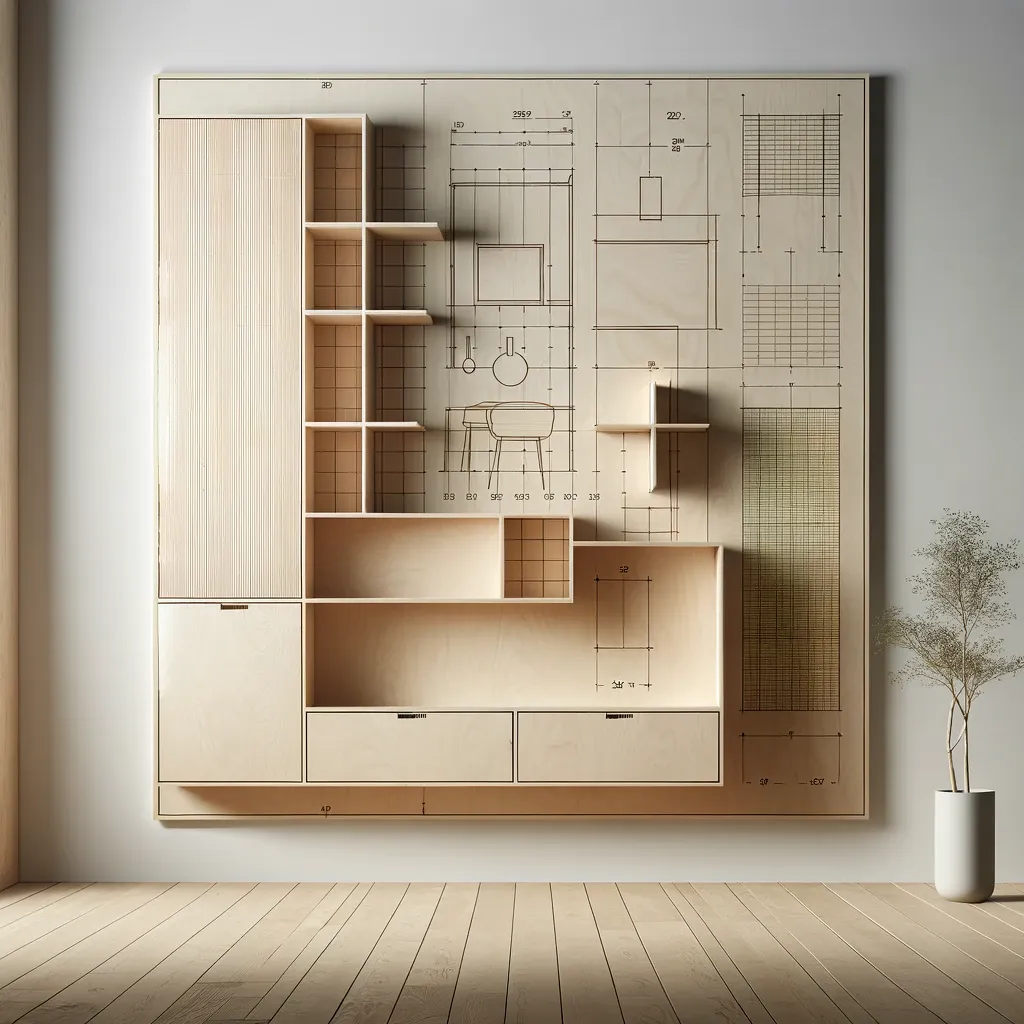Principles of Modern Design
Minimalist design, often encapsulated in the phrase "less is more," is not just a style; it's a philosophy. In this article, we delve into the core principles of minimalist design, exploring how simplicity can lead to a sense of tranquility and elegance in any space. Imagine entering a room where every object holds purpose and beauty, a space that breathes tranquility and sophistication - this is the heart of minimalist design.
Origins in Japanese Aesthetics and Modernism
Minimalist design, while popularized in the West during the mid-20th century, has its roots deeply embedded in traditional Japanese aesthetics. The Japanese concept of Ma, which translates to "space," emphasizes the importance of emptiness and the role it plays in highlighting the beauty and functionality of an object. This principle, when combined with the Zen philosophy's focus on simplicity and inner calmness, heavily influenced the development of minimalist design
In the Western world, the seeds of minimalism were sown through the modernist movement in the early 20th century. Modernism, as an artistic and architectural movement, was a reaction against the ornate styles of the 19th century, like Victorian and Art Nouveau.
Architects and designers like Ludwig Mies van der Rohe and Le Corbusier championed the idea that form should follow function, promoting simplicity and utility in their designs. Their work was characterized by clean lines, unadorned surfaces, and a lack of clutter, setting the stage for minimalist design.
Post-War Minimalism and International Influence
The post-World War II period marked a significant turning point for minimalist design. The era's scarcity of resources and the need for efficient production led to a design philosophy that emphasized simplicity and functionality.
This period also saw a blending of cultural influences, as Western designers became increasingly influenced by Japanese aesthetics, integrating its principles of simplicity, natural materials, and focus on empty space into their work.
This era's iconic designs include the Eames Lounge Chair, which combined functionality with a sleek, modern aesthetic, and the minimalist paintings of artists like Donald Judd and Agnes Martin, who were part of the minimalist art movement. Their work in visual art paralleled and influenced minimalist design in furniture and architecture.

Late 20th Century and the Rise of Tech Minimalism
In the late 20th century, minimalist design began to be influenced by the emerging digital age. Technology companies, especially those in the emerging Silicon Valley, embraced minimalism in both their product design and overall aesthetic. This was partly a response to the increasing complexity of technology; a minimalist design made products appear more user-friendly and accessible.
The minimalist design in this era was not just about the look but also the experience. Designers like Dieter Rams, with his "Ten Principles for Good Design," and tech companies like Apple, under the design leadership of Jony Ive, championed products that were not only aesthetically minimalist but also intuitive to use. Their work emphasized the importance of a design that was as functional as it was visually appealing.

Minimalism in the 21st Century
Today, minimalist design continues to evolve, adapting to the needs of a rapidly changing world. It is no longer just a style but a philosophy that permeates various aspects of life and design, from tiny homes and decluttered living spaces to user interface design and digital product aesthetics. Contemporary minimalism is also intertwined with sustainability, reflecting a growing awareness of environmental issues and the importance of simplicity and intentionality in a consumerist society.
As we move forward, minimalist design is likely to continue its evolution, reflecting the changing values and technologies of our time, while staying true to its core principles of simplicity, functionality, and beauty.

Key Principles of Minimalist Design
- Simplicity in Form and Function:Every element must serve a purpose. This principle rejects ornate and elaborate details in favor of clean lines and functional forms.
- Monochromatic Color Scheme:Minimalism often employs a monochromatic color palette, with whites, beiges, and greys creating a serene and cohesive look.
- Texture and Quality over Quantity:In minimalist design, the texture becomes key. Quality materials that offer both tactile and visual pleasure are preferred.
- Open Space and Clutter-free: Open, breathable spaces are paramount. Clutter is minimized, and each item is carefully selected for its utility and aesthetic.
The digital age has ushered in a new frontier for minimalist design, profoundly influencing product design and user experience. As technology became more intricate and feature-rich, the need for simplicity and clarity in user interfaces (UI) and user experience (UX) design became paramount.
This necessity birthed digital minimalism, a design approach that focuses on reducing visual and functional complexity to enhance usability. Icons, typography, and color schemes in digital products are streamlined, adhering to the minimalist ethos of "less is more." Companies like Google and Spotify exemplify this, using clean, uncluttered layouts and intuitive navigation in their applications. This minimalism not only makes digital products more accessible and easier to use but also creates a visually calming space in the often-overwhelming digital landscape.
Looking to the future, minimalism appears poised to evolve beyond a mere design trend. As we face global challenges like climate change and overconsumption, the principles of minimalism could become essential to sustainable living. In design, this might mean an even greater emphasis on materials that are eco-friendly and designs that are inherently sustainable and timeless. In lifestyle, minimalism might evolve from a personal aesthetic choice to a necessary approach for responsible living. The potential for minimalism to influence technology, architecture, urban planning, and even social structures is immense, as it offers a path to balance, sustainability, and mindfulness in an increasingly complex world.
By adopting minimalist principles, we open ourselves to a more thoughtful, intentional way of living, where less truly becomes more – more space, more clarity, and more appreciation for the beauty of simplicity.



